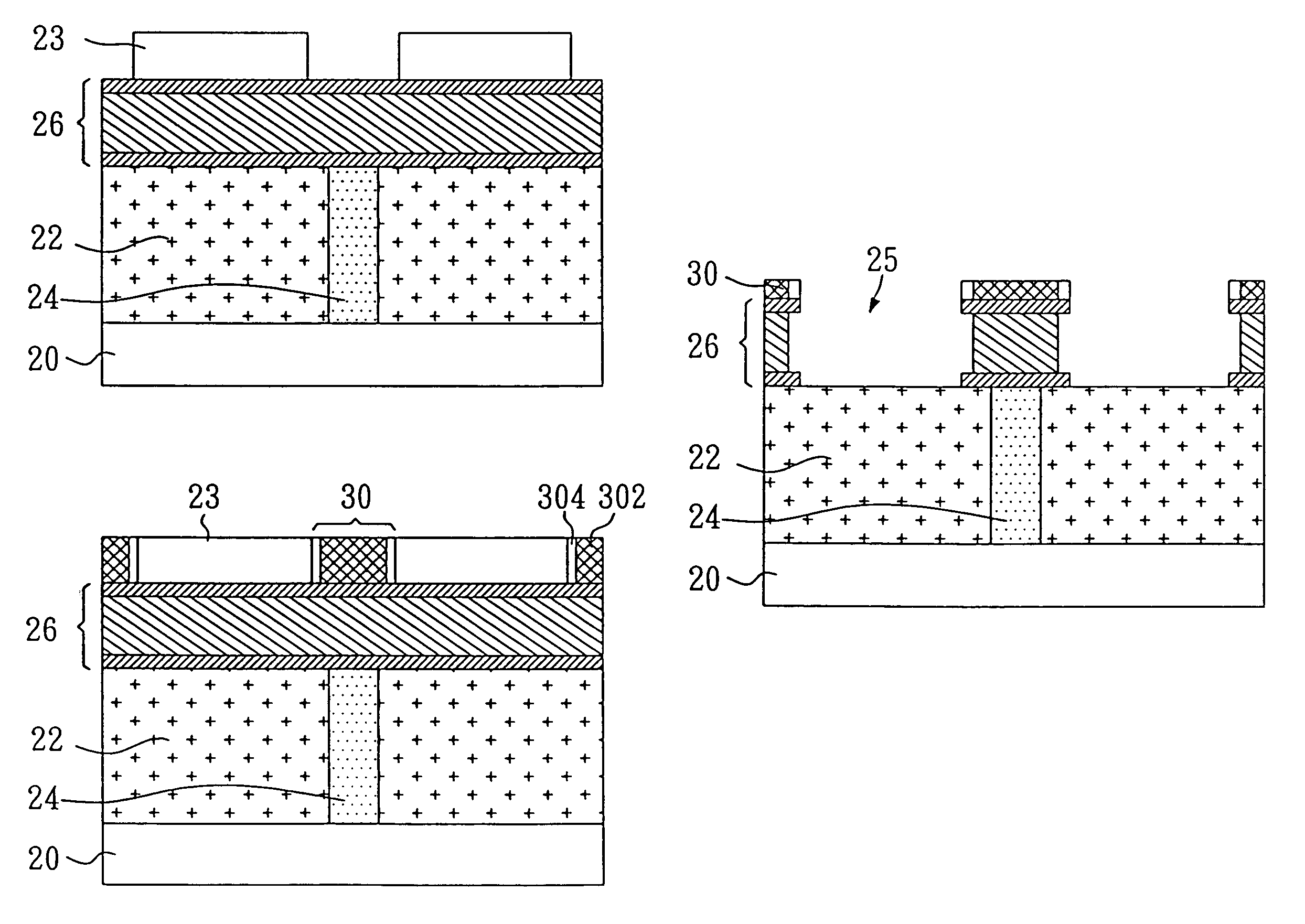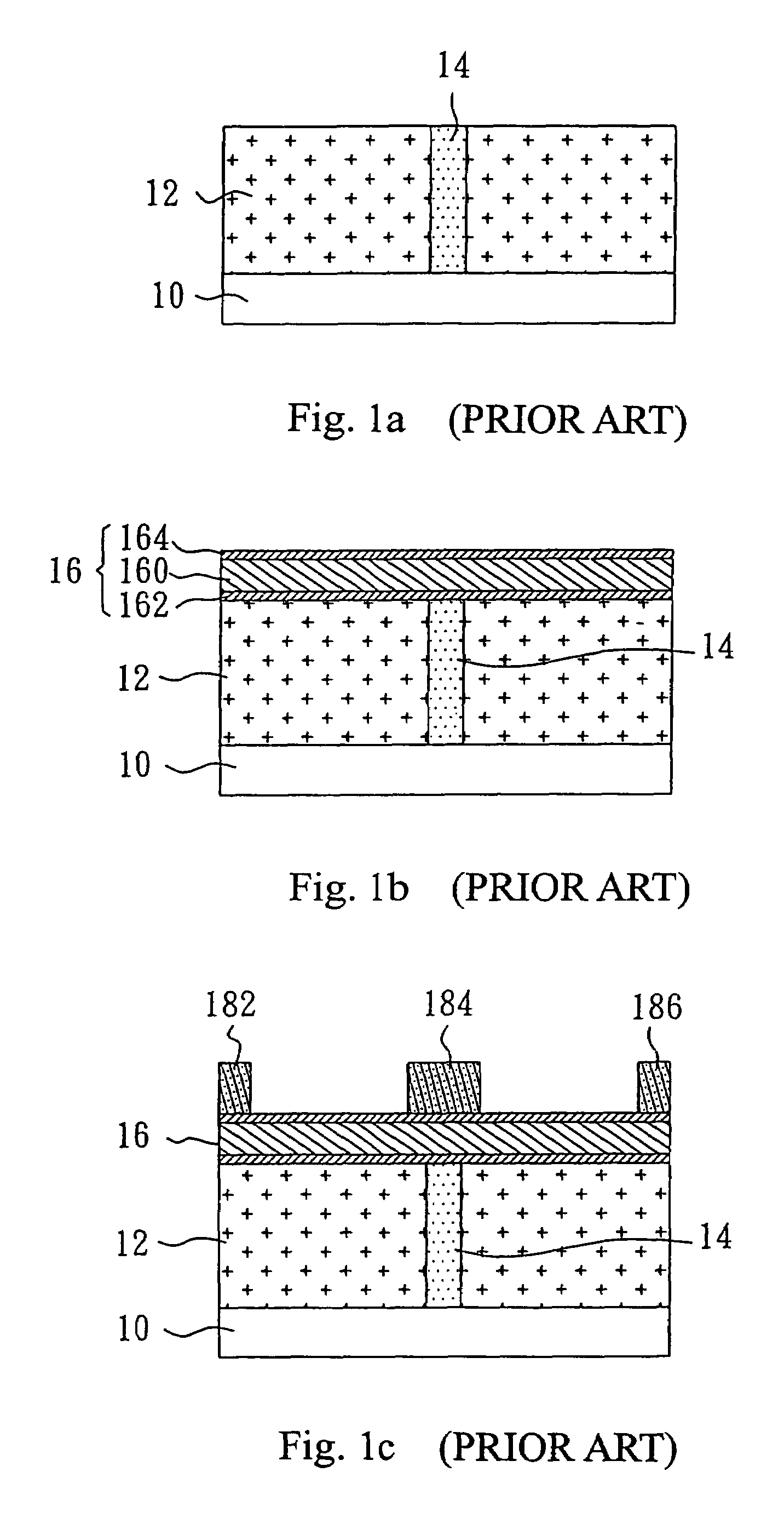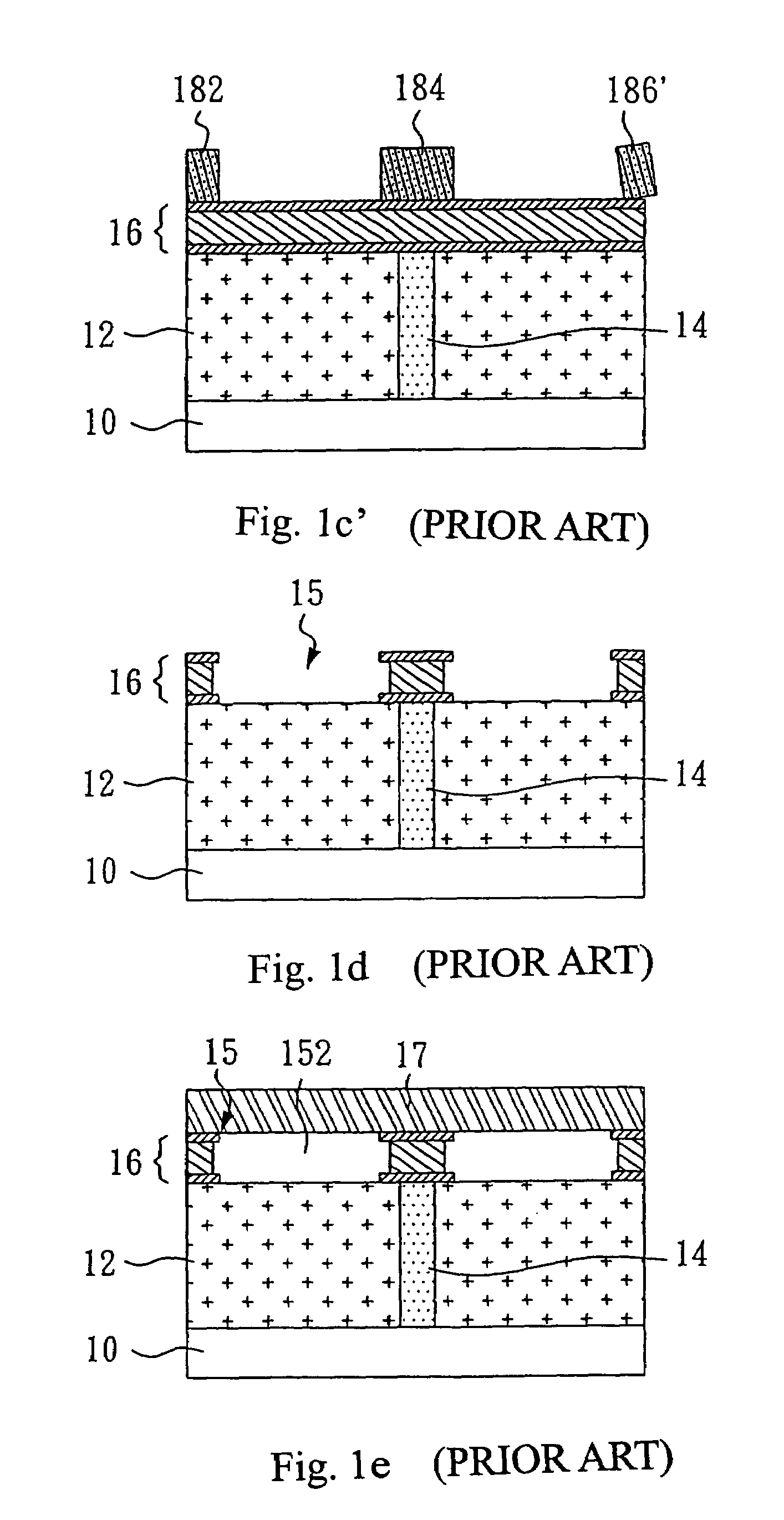Conducting wire and contact opening forming method for reducing photoresist thickness and via resistance
a technology of contact opening and conducting wire, which is applied in the direction of basic electric elements, electrical equipment, semiconductor devices, etc., can solve the problems of reducing the accuracy of the etched profile, affecting the effect of etching accuracy, and affecting the etching quality of the remaining metal portions, so as to reduce the required thickness of photoresist
- Summary
- Abstract
- Description
- Claims
- Application Information
AI Technical Summary
Benefits of technology
Problems solved by technology
Method used
Image
Examples
Embodiment Construction
[0022]An embodiment of the present invention will be described in detail with reference to the accompanying drawings.
[0023]The structures shown in FIGS. 2a and 2b are the same as those shown in FIGS. 1a and 1b, and therefore the descriptions thereof are omitted herein. In the drawings, reference number 20 indicates a substrate, 22 indicates a first dielectric layer, 24 indicates a via filled with metal, 26 indicates a conductive layer, which includes a metal layer 260 of aluminum, and protective layers 262 and 264 formed on the top and bottom of the metal layer 260. The material of the protective layers can be Ti / TiN.
[0024]A second dielectric layer 23, of which the material can be oxide, preferably NSG (non-doped silicon glass), is formed on the conductive layer 26, as shown in FIG. 2c. Then, a photoresist layer 28 of a predetermined pattern is formed on the second dielectric layer 23 to define the position where a contact opening is to be formed, as shown in FIG. 2d. The portions o...
PUM
 Login to View More
Login to View More Abstract
Description
Claims
Application Information
 Login to View More
Login to View More - R&D
- Intellectual Property
- Life Sciences
- Materials
- Tech Scout
- Unparalleled Data Quality
- Higher Quality Content
- 60% Fewer Hallucinations
Browse by: Latest US Patents, China's latest patents, Technical Efficacy Thesaurus, Application Domain, Technology Topic, Popular Technical Reports.
© 2025 PatSnap. All rights reserved.Legal|Privacy policy|Modern Slavery Act Transparency Statement|Sitemap|About US| Contact US: help@patsnap.com



